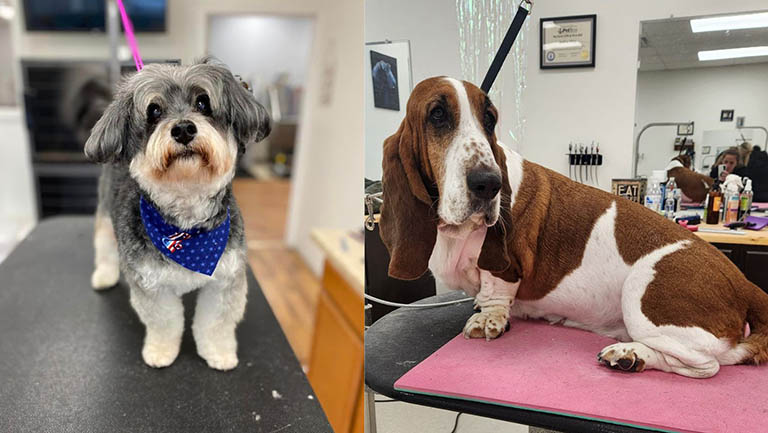Discovering whether your canine companion falls into the category of low maintenance or high maintenance grooming dogs is essential for effective pet care. In this blog, we delve into the significance of pet grooming, explain the distinguishing factors between low and high maintenance grooming breeds, provide examples of breeds fitting each description and offer valuable tips for managing your dog’s grooming requirements. By understanding these nuances, you’ll be better equipped to create an optimal grooming regimen for your pet or decide if a breed is a good fit for you.
Understanding the Significance of Pet Grooming
The Basic Grooming Needs of Dogs
Pet grooming involves several essential steps to ensure dogs look and feel their best. Among these steps are bathing, brushing and haircuts. While all dogs require bathing and brushing, certain breeds may also necessitate haircuts based on their coat type. Additionally, grooming can include ear cleaning, nail trimming and filing and optional services like tooth brushing and anal gland expressions.
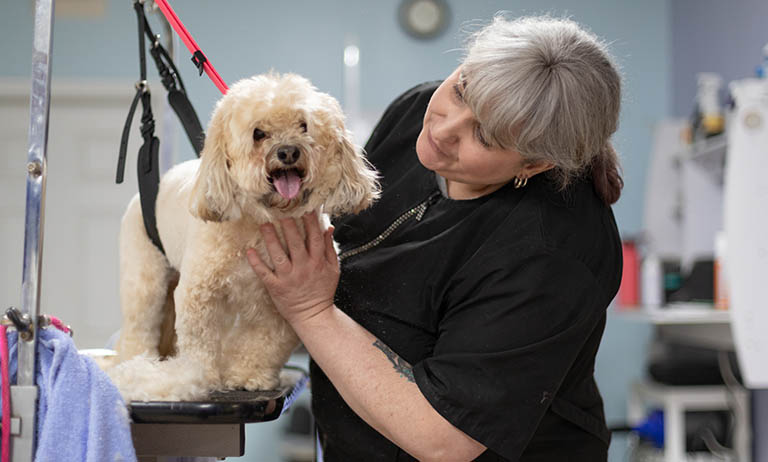
Appearance Benefits of Pet Grooming
Bathing and brushing are integral in maintaining the coat’s soft and shiny look by eliminating dirt, loosening and removing dead fur, distributing natural oils and promoting blood circulation to the hair follicles. These actions help to minimize shedding, prevent odors, encourage coat shine and keep the skin moisturized. Haircuts contribute to cleaner hair, as it doesn’t drag on the ground, and ensures the dog looks aesthetically pleasing by maintaining a well-shaped and styled coat.
Health Benefits of Dog Grooming
Prevention of Mats: All three steps contribute to the prevention of matting within the dog’s coat. Mats are clumps of hair that tangle and trap dead fur due to friction and shedding. Without regular care, mats tighten, causing discomfort and pain by pulling on the dog’s skin. This can lead to behaviors like licking, itching or biting, potentially resulting in hot spots or skin infections.
Prevention and Detection: Prevention and detection are two valuable benefits of pet grooming. Grooming provides an opportunity to closely monitor a pet’s skin and coat health, enabling early identification of potential issues before they escalate. Pet grooming allows for detection of infected eyes, ears or nails, as well as injured paw pads, skin infection, hot spots or sores. Additionally, groomers or owners can remain vigilant for parasites such as ticks and fleas during grooming sessions. Frequent nail trims and ear cleanings during grooming appointments also play a crucial role in preventing joint pain, loss of traction and different infections.
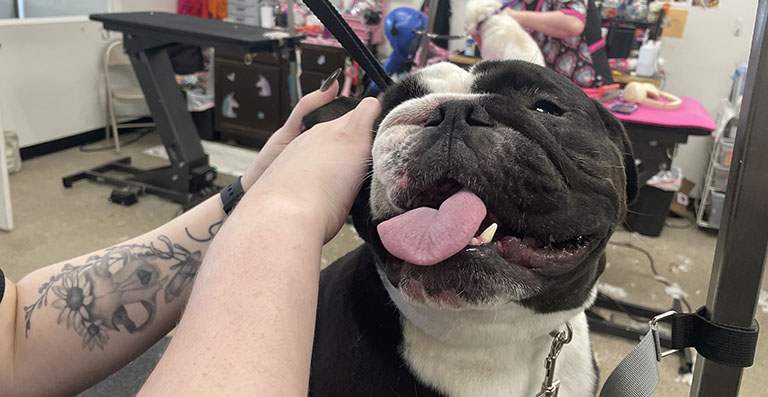
What Makes a Breed High or Low Maintenance for Grooming?
Thickness of Canine’s Coat
Double- or triple-coated breeds typically feature a dense, soft undercoat paired with longer, coarser outer guard hairs. In the case of triple-coated dogs, they possess two layers of undercoat instead of one. The dense undercoat serves to safeguard the dog from parasites and maintain warmth during winter, while also facilitating cooling in summer by trapping and circulating cool air. Shaving such breeds in summer is ill-advised due to the protective nature of their coats. The outer coat shields the canine from sun damage, wind, weather, dirt and debris.
Breeds with thick coats often experience significant shedding, particularly during seasonal transitions like winter to summer. Shedding occurs as their undercoats adjust to regulate temperature, reducing fur density for summer and increasing it for winter warmth. Daily brushing, consistent bathing schedules and occasional deshedding treatments are essential to prevent matting and skin infections in these breeds or mixes.
Dogs with thinner coats lack an undercoat, resulting in less intense shedding and reduced likelihood of fur impaction. As a result, their brushing requirements are less frequent, typically occurring on a weekly basis rather than daily.
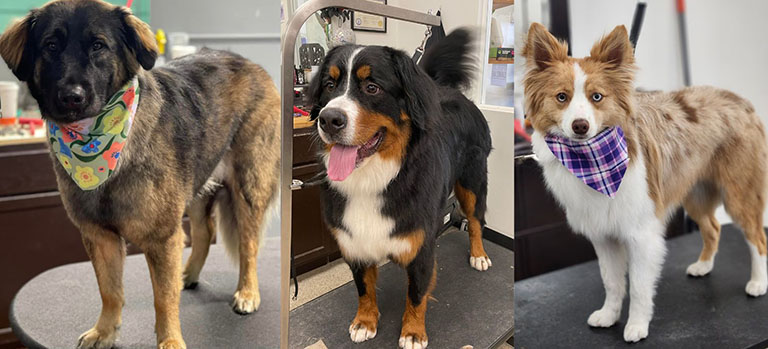
Length of Dog’s Coat
Long-haired coats are characterized by their flowing length, which may extend to the floor in certain breeds. These coats vary in thickness and texture, ranging from fine and silky to thicker and coarser. The length of their hair provides warmth during winter and acts as a protective barrier against rain and snow, safeguarding their skin.
Canines with long coats may face challenges such as their hair or fur dragging on the ground, leading to debris accumulation. Excessive hair length in the summer can cause overheating, and long hair may obstruct their vision or make it difficult to walk when covering their paws. Daily brushing and regular baths and haircuts every few weeks are essential for maintaining the upkeep of long-haired dogs.
Short-haired dogs do not require haircuts, as their hair doesn’t grow long enough to necessitate one. Their short coat length reduces the need for extensive grooming compared to longer-haired breeds. While they may not need regular haircuts, occasional baths and weekly brushing help maintain their coat’s health and cleanliness.
To learn more details about long-haired breeds read here.
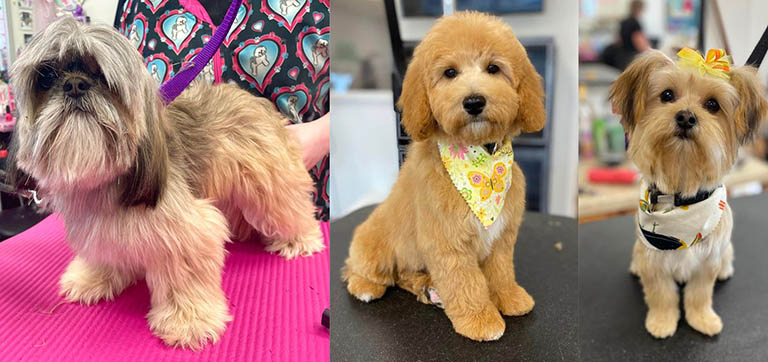
Curliness of Pet’s Coat
A curly coat on a dog consists of hairs that naturally grow into curls and continue to lengthen. However, curly coats are prone to tangling and knotting, especially when debris or loose hair becomes trapped within the curls. As the hair twists around these particles, the coat becomes more compacted and prone to matting. Ignoring these tangles can lead to the coat becoming excessively matted and thick, increasing the risk of overheating for the dog. Untangling the intense knots can be a frustrating and painful experience for the dog.
Daily detangling is the key for maintaining a curly coat, ensuring that each curl receives attention and care. In addition to detangling, daily brushing helps keep the coat in good condition, preventing tangles and matting. Regular haircuts help manage the length of the curls and prevent excessive knots.
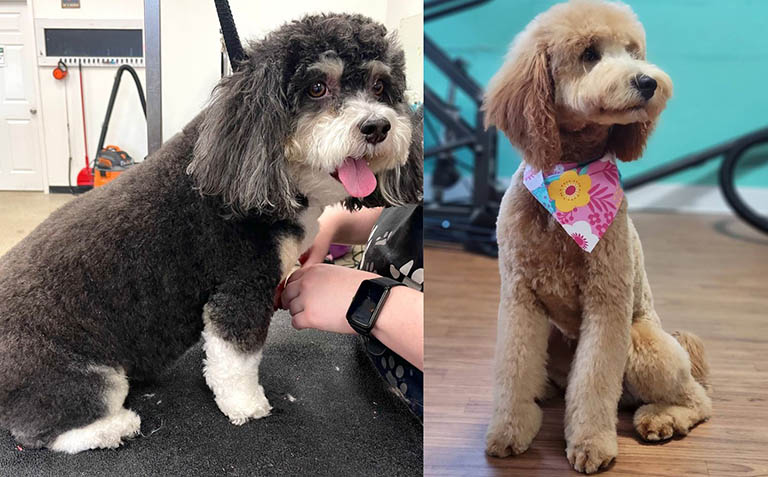
The Lowest Maintenance Grooming Breeds
These breeds have short, thin hair that won’t get matted or need to be trimmed. These breeds do require occasional baths and weekly brushing.
- Beagle
- Boxer
- Doberman pinscher
- Great Dane
- Dachshund
- Chihuahua
- Italian greyhound
- French bulldog
- Bull mastiff
- American Staffordshire terrier
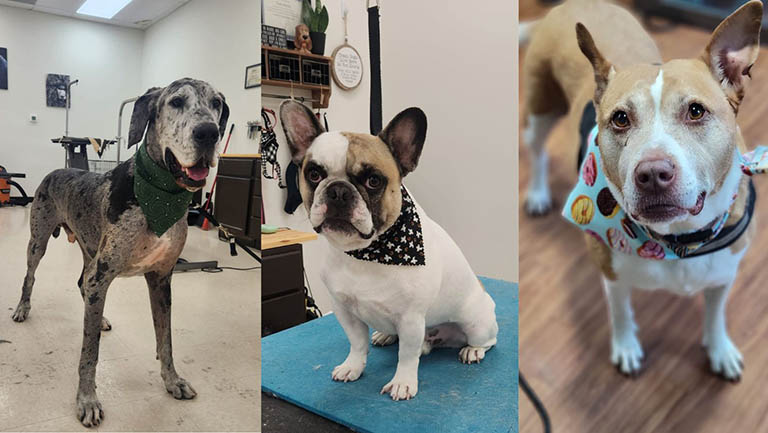
The Highest Maintenance Grooming Breeds
These breeds and mixes have long, thick and/or curly coats that require a more active grooming routine that includes daily brushing, daily detangling, consistent baths and frequent haircuts.
- Poodle
- Doodle
- Bichon frise
- Yorkshire terrier
- Shih Tzu
- Siberian husky
- Australian shepherd
- Cocker spaniel
- Old English sheepdog
- Lhasa apso
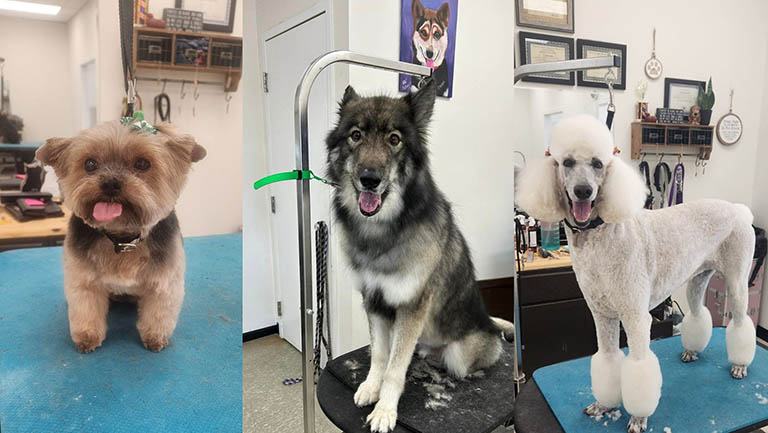
Tips for Managing Dog’s Grooming Needs
Establish a Grooming Routine
Understanding your dog’s specific grooming needs is an important part of proper pet care. Consult with a veterinarian or local groomer to determine the requirements for your pet’s skin and coat health. From there establish a grooming routine that includes a consistent schedule for bathing, brushing and haircuts. At Smoochie Pooch, we advise bathing short-haired dogs every 6-8 weeks, double-coated dogs every 4-6 weeks and curly long-haired breeds every 2-4 weeks. Haircut sessions should be scheduled every 4-6 weeks or every every 2-4 weeks if regular at-home maintenance isn’t feasible. Dedicate daily or weekly time to thoroughly brush your dog at home to keep their coat healthy and free of tangles.
Selecting the Right Grooming Tools
Invest in high-quality brushes designed to effectively demat, detangle and eliminate loose, dead fur or hair. Excellent options for high-maintenance breeds include the slicker brush, metal comb and pin or undercoat rake. For short-haired dogs rubber curry brushes, bristle brushes or the EquiGroomer are great choices. Having the appropriate tools can greatly simplify and enhance the process of caring for your pet at home and in between grooming appointments.
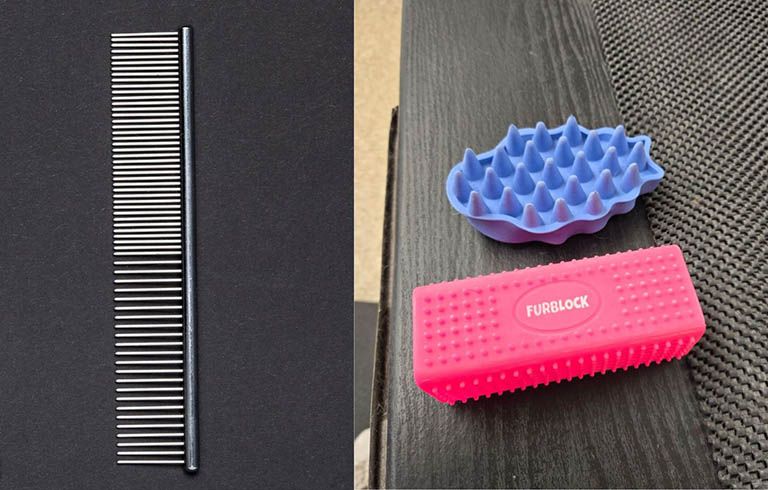
Seek Professional Grooming Help
Professional groomers possess expertise in various haircut styles and grooming techniques, making them a preferred choice for many pet owners. If you feel apprehensive or unsure about grooming your dog yourself, it’s advisable to entrust the task to a trained professional. Groomers are knowledgeable in animal behavior and have advanced education in pet skin and coat health, ensuring a safe and comfortable grooming experience for your dog.
Taking the Best Care of Your Dog
Understanding the reasons behind the grooming requirements of grooming your low- or high-maintenance dog enables you to provide them with the care and attention they need and deserve. Being able to recognize potential issues that may arise with certain breeds empowers owners to take preemptive measures rather than being caught off guard by escalating problems. Once you ascertain whether your current dog or potential dog falls into the low- or high-maintenance category, you can take proactive steps by establishing a suitable grooming routine equipped with the necessary tools for their needs.


